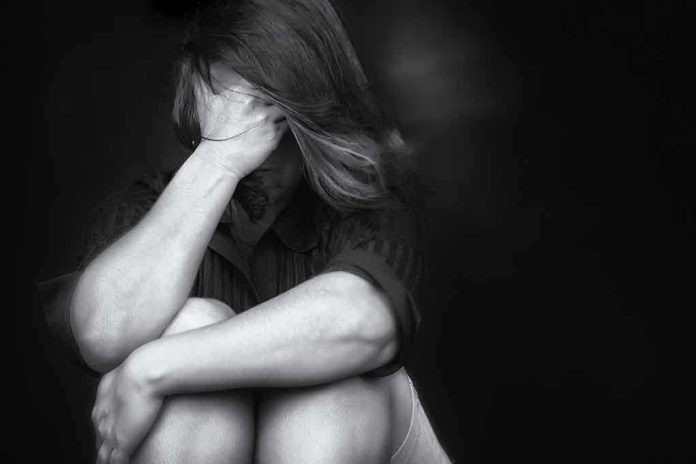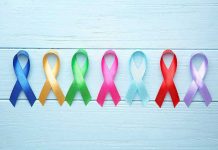
Imagine halting a panic attack in its tracks—not with medication or meditation, but with a breathing trick so simple and effective, you’ll wonder why it isn’t taught in kindergarten gym class.
At a Glance
- Panic attacks are sudden, intense episodes of fear that can strike anyone, anywhere, anytime.
- CBT and SSRIs are the leading treatments, but a breathing expert’s technique offers rapid, drug-free relief.
- Access to care and social stigma remain major hurdles for sufferers, especially since the COVID-19 pandemic.
- Ongoing research is exploring digital therapies and safer medications for panic disorder.
Panic Attacks: The Invisible Saboteur That Never RSVPs
Panic attacks are the uninvited guests at the anxiety party—bursting through your mental door with symptoms like tingling, blurred vision, and the sensation that your own throat has become a boa constrictor in yoga pants. The term “panic attack” first popped into psychiatric circles over a century ago, but not until the 1980s did it get its own official diagnosis, graduating from the general pool of “nervous complaints” to a full-fledged star in the Diagnostic and Statistical Manual of Mental Disorders. And while the attacks themselves are fleeting, the fear of the next one can turn daily life into a high-stakes game of Whac-A-Mole, especially for the 2-3% of people dealing with panic disorder.
Before psychiatrists and therapists learned to spot panic attacks, many sufferers ended up in the ER, convinced they were having a heart attack or a mysterious respiratory ailment. Now, we know they are the drama queens of the anxiety world—loud, disruptive, but ultimately treatable. Thanks to public health campaigns and the tireless work of advocacy groups, more people are seeking help, though stigma and underdiagnosis still keep many in the shadows.
The Breathing Trick That Outsmarts a Brain in Overdrive
Forget scented candles and Tibetan singing bowls. When panic strikes, nothing cuts through the chaos faster than the right breathing technique. The breathing expert’s secret? Slow, deliberate exhalation—twice as long as your inhale. This isn’t just folk wisdom; it’s basic neurobiology. Lengthening your exhale taps into the parasympathetic nervous system—the one responsible for turning off your brain’s fire alarms and letting your body know it’s time to chill. By focusing on this simple pattern (inhale for four counts, exhale for eight), many patients report that their dizziness fades, their heart rate slows, and their mind regains control.
While cognitive-behavioral therapy (CBT) remains the heavyweight champion for long-term management, this breathing hack delivers on-the-spot relief, making it the mental health equivalent of carrying a fire extinguisher in your pocket. And unlike pharmaceuticals, it won’t leave you drowsy, dependent, or on first-name terms with your local pharmacist. Mental health authorities like the NHS and Mayo Clinic encourage early intervention with therapy and medication—but for those moments when you feel panic bubbling up, this breathing trick could be the difference between meltdown and mastery.
Why Most People Still Suffer in Silence
Despite decades of progress, panic attacks remain the ninja assassins of mental health—striking swiftly and vanishing, often before anyone else notices. Access to effective treatment is still patchy; insurance hurdles, long waitlists, and rural deserts for psychiatric care mean that many people get their first “treatment” in an ambulance, not a therapist’s office. The COVID-19 pandemic only fanned the flames, driving up anxiety rates and pushing even more people to the breaking point. That said, telehealth and digital CBT are helping bridge the gap, making expert help available from the comfort of your couch (or panic bunker).
Stigma is the other silent saboteur. While public awareness has improved, too many still see panic attacks as a personal failing, not a neurochemical misfire. Advocacy groups like ADAA and NAMI are doing their part, but the real battle is getting people to see mental health the same way they see a sprained ankle or a bout of the flu: treatable, non-shameful, and deserving of professional help.
What’s Next: The Digital Revolution and the Quest for Better Drugs
The future of panic attack treatment is digital, customizable, and—if researchers have their way—a lot less reliant on pills with problematic side effects. CBT, both in-person and online, continues to lead the charge, often paired with SSRIs or other anxiolytics for tougher cases. App-based therapy, telehealth consults, and AI-powered mood trackers are turning smartphones into pocket therapists, though experts caution that not all apps are created equal and quality control is key.
Pharmaceutical research is making cautious progress toward medications that calm the mind without risking dependence. In the meantime, lifestyle tweaks—exercise, mindfulness, and, yes, that magical breathing pattern—are earning their place alongside more traditional treatments. The goal is clear: fewer emergency room visits, less disruption, and a life where panic attacks are a footnote, not the headline.
Sources:
Mayo Clinic: Panic attacks and panic disorder
NIMH: Panic Disorder—What You Need to Know







